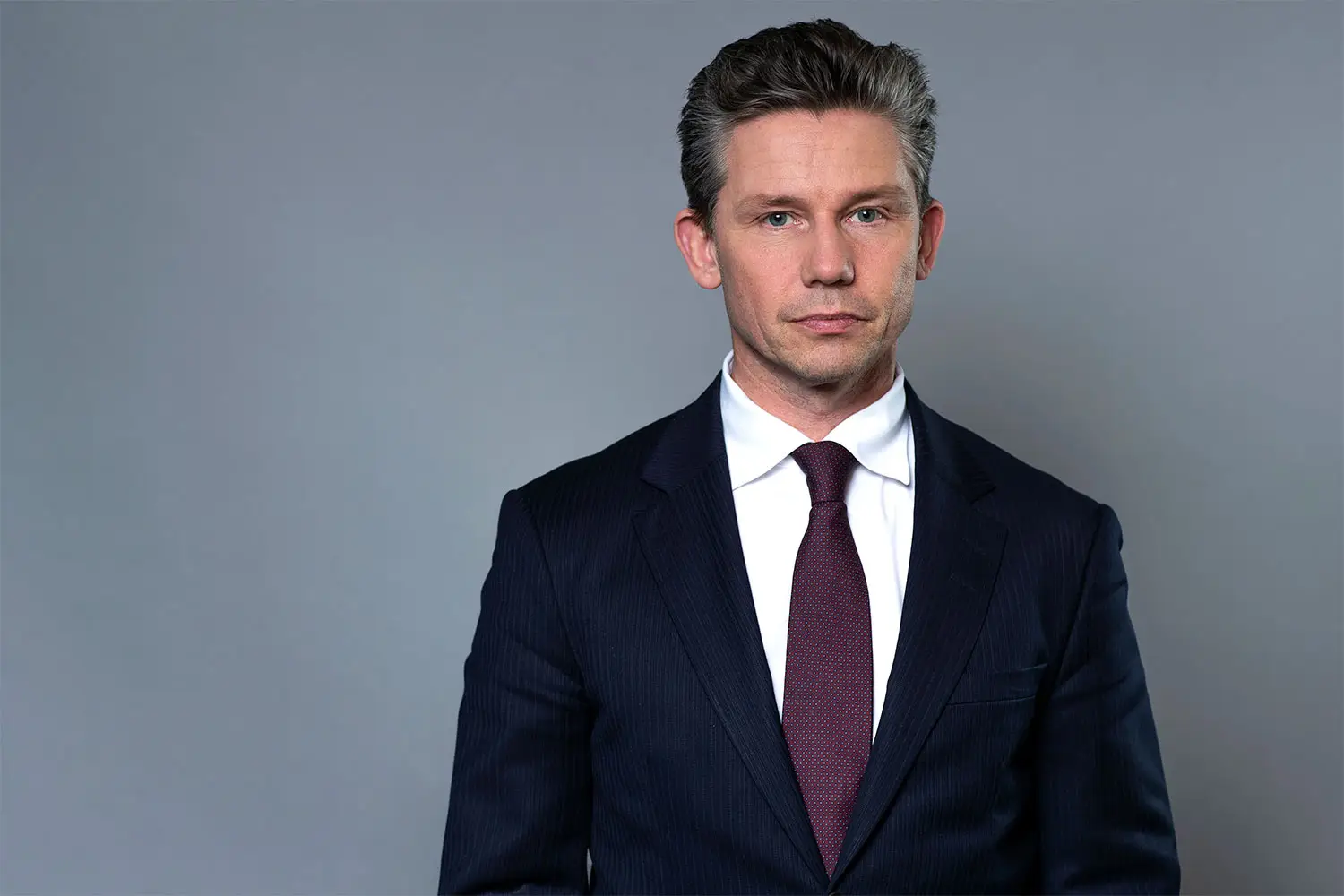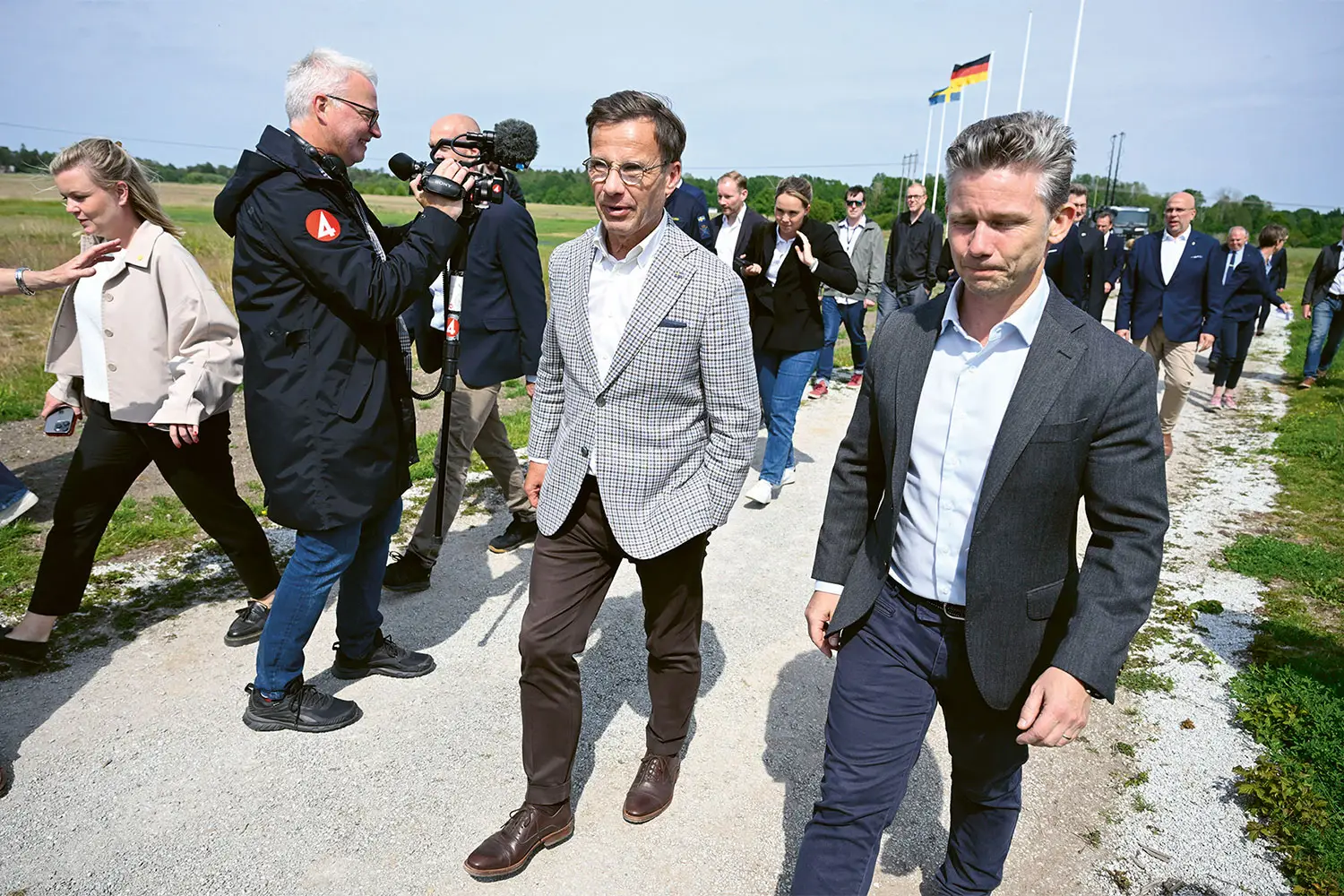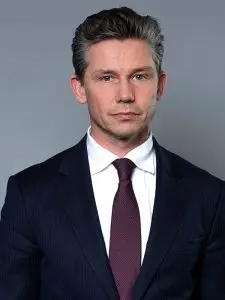Interview:
Swedish Minister for Defence
Pål Jonson
Interview for Maanpuolustus magazine 19th August 2025
Outi Mäkinen
Europe is transforming in defence more than any other region in the world due to increasing defence spending and support to Ukraine. Sweden wants to integrate rapidly to NATO and it has actively deployed forces to NATO’s deterrence and defence activities. Signing up to NATO’s 5% GDP goal means return to Cold War levels of defence spending. “In Sweden, this is happening after decades of negligence and underinvestment,” explains Swedish Minister of Defence Pål Jonson.
What is the biggest security threat for Sweden?
Russia, Russia, Russia. Former Minister of Defence of Finland Jyri Häkämies was ahead of his time when he gave his famous speech in Washington in 2007. Russia is the defining threat for Sweden both in terms of a possible kinetic threat and Russia’s increasingly active engagement in the hybrid domain. Russia is prepared to take higher political and military risks to achieve its goals.
All opinion polls indicate that there is an increasing awareness among the Swedish public about the threat Russia poses for Sweden and other Allies. Especially after Russia’s full-scale invasion to Ukraine the awareness has grown to high levels.
Swedish Defence Commission has been stating since 2019 that an armed attack against Sweden and other partners cannot be excluded. Since then, we have taken measures to mitigate those risks. Opinion polls also show that there is a correlation between the threat assessment and people’s support to increasing defence spending.
How is NATO’s 5% goal perceived in Sweden? What will be your priority fields of investment?
All parties across the aisle support reaching NATO’s 5% defence investment goal by 2035 and that Sweden will finance it by loans. Similarly, all eight parties gave their support for all the main features of the December 2024 Defence Bill. Six out of eight parties supported the bills on Defence Cooperation Agreement with USA and Sweden’s accession to NATO. All eight parties have stood behind all our Ukraine support packages. There is clearly a high degree of political unity on defence and security matters in Sweden.
We will invest the 3,5% GDP defence expenditure into fulfilling NATO’s capability targets that were allocated to Sweden and other Allies earlier this year. Meeting the capability targets is a condition for the Alliance to have executable defence plans. Sweden’s capability targets focus for example on improving Swedish Armed Forces’ resilience and readiness, ability to sustain high intensity war for long periods of time, air defence, ammunition supply and unmanned systems. For the 1,5% defence and security related expenditure Sweden’s primary focus is to improve infrastructure and security of supply.
With the NATO 5% goal, we are talking about allocating very significant amounts of money to defence. We will be returning to Cold War levels of defence spending. In Sweden, this is happening after decades of negligence and underinvestment.
Sweden plans to increase number of conscripts by one third from 8,000 to 12,000 per year by 2032. How do you ensure that Swedish Armed Forces can meet this goal?
Compared to Finland, Sweden’s goal of 12,000 conscripts per year still means that a low amount of the population is affected by the national service and the conscription. It is necessary for us to increase the number of conscripts for two reasons: First, we need more personnel for our ground forces. With the new NATO defence capability targets we will build four mechanized brigades, a very sizable battle group to the island of Gotland as well as beef up our current brigades. Conscript service is also an indispensable avenue for recruitment. 38% of the conscripts stay in the Armed Forces after finishing their service.
Currently, the conscript service is popular. Every year there is more people willing to do it than what we can take in. Over 80% of those who attend military service would recommend it to others. My impression is that conscript service is seen as something that is desirable to do both for career reasons and as a service to your country. People that we get to our Armed Forces are highly qualified and motivated.

How is Sweden’s integration to NATO progressing? What kind of changes have you made nationally?
Sweden’s integration to NATO is progressing well. From the beginning, we decided that all our military service branches are to be engaged in NATO activities. Air Force has positioned Gripen fighter planes to Poland for Air Policing mission. Ground forces have deployed a mechanized battalion to Forward Land Forces (FLF) Latvia and taken the framework nation role for FLF Finland. Navy has participated in the Baltic Sentry mission and in NATO’s Standing Naval Maritime Group rotations. We adhere strongly to the principle of 360 degrees, but the focus has been in our immediate neighborhood in the Baltic Sea region. Due to our previous participation in NATO’s exercises and crisis management operations, interoperability has been at good level from the beginning.
Air connectivity has proven to be more challenging than expected. NATO’s LINK16 and LINK 22 systems are great but getting access to them has not been as automatic as anticipated.
Sweden is currently situated under Joint Forces Command (JFC) Brunssum. We are expecting the transition to JFC Norfolk to happen early next year at the latest. Once in JFC Norfolk, we will be operationally and tactically fully integrated into NATO’s defence plans.
Due to ongoing NATO integration, we decided to present our Defence bill one year early. We realized that it was necessary to adapt our force posture quickly to the requirements of NATO. We have adopted new legislation related to NATO accession and agreed on national decision-making modalities before NATO Summits. We have adopted NATO requirements for Armed Forces internal communication and for the communication between Armed Forces and the Government.
Sweden makes significant contributions to NATO’s peace time collective defence tasks. How do you ensure you have resources for all those activities?
We present every year a plan of our contributions to NATO’s activities for deterrence and defence to the parliament. Our deployment to FLF Latvia is a long-term commitment, and we have a plan on how to sustain it based on rotational model. I was glad to notice that the first battalion re-deployed home was better than when it was deployed to Latvia. They exercised extensively and gained tactical-operational experience and interoperability from working with other Allies. Troops’ combat value is higher now. We have deployed Gripen fighter aircrafts to Poland for Air Policing mission and have participated in naval rotations. Sweden will continue to contribute to NATO’s air policing and its standing maritime forces. We assess that it is possible for our force posture to continue these assignments. When we engage, we gain valuable experience from the missions. In the meanwhile, we continue to support Ukraine which is a significant undertaking.
Sweden is the framework nation for FLF Finland. How is setting up FLF Finland progressing?
It is progressing well. We endorsed the concept of FLF Finland at the February NATO Defence Ministerial meeting. In June, United Kingdom, France, Norway, Iceland and Denmark announced their willingness to participate in FLF Finland. One or two other countries have expressed interest to join. FLF Finland has similarities with the eight already existing FLFs but there are some differences too. There are very good training facilities in Northern Finland, which offers possibilities for Allies to enhance their sub-arctic capabilities. Troop contributions are not based on standing forces. Innovation will be an important part of FLF Finland.
What kind of cooperation Nordic countries should do in the NATO context?
We think it is unwise to brand Nordic countries as a block or a club within NATO even if we share the same values and interests. Our greatest contribution to NATO is that our region is becoming so militarily integrated in terms of ability to conduct operations, infrastructure, defence spending etc. Nordic defence concept, based on NATO’s defence plans, is the driver for enhancing our cooperation.
We would welcome more joint acquisitions. Patria’s Common Armed Vehicle System (CAVS) and ramping up Nammo’s industrial capacity to produce ammunitions are good examples of such cooperation. We are also working together to acquire air to air refuelling capability to meet NATO defence capability targets. Host Nation Support and improving civ-mil connectivity are areas where we could do more together.
How would you describe the state of transatlantic cooperation?
Transatlantic cooperation is very important. We are at the stage where Europeans need to take more responsibility for European security. Americans have been passing that message for several decades but today Europe is closer to putting our money where our mouth is. Commitment to 5% GDP defence investment plan is necessary.
Europe is now transforming more in defence than any other region in the world. This year was my third year in the Shangri-La dialogue in Singapore. In the past I have felt that travelling to Asia is like travelling to future. But today, Europe is transforming the most thanks to our increasing defence spending and the lessons we are drawing from supporting Ukraine. We send a lot of Swedish weapon platforms to Ukraine. We learn a lot about how they operate in the battlefield, and we learn to innovate. I have been in security and defence sector for 30 years and never have I seen this kind of sense of urgency.
Innovation is a good example of strong transatlantic cooperation. I have visited US to gain inspiration for Swedish defence innovation initiative. We have a liaison officer at US Department of Defence’s Defence Innovation Unit in Silicon Valley, Saab has RDI activities in San Diego, and our agencies are cooperating with DARPA (Defense Advanced Research Projects Agency) among others. We have launched defence innovation strategy, created defence innovation board, and we are about to start a defence innovation unit that can team up with other interlocutors.

Photo: Jessica Gow / TT / Lehtikuva
In your personal view, what should be the vision for Nordic defence cooperation 2045?
Nordic countries should become one of the most militarily integrated regions in the world. I see a lot of opportunities for ever closer collaboration in defence and security for example by increasing connectivity, implementing NATO’s defence plans and introducing high-end technology and innovation to our activities. Also, there are opportunities for more intense Nordic-Baltic cooperation. We are all very like-minded countries.
Do you see potential for Nordic countries to acquire perfectly interchangeable defence material or should starting point continue to be national needs?
There is a sense of urgency to enhance our interoperability. Platform commonalities make training, logistics and maintenance etc easier. However, at the end of the day countries may decide to choose different platforms depending on prize, performance, delivery times or relationship with other countries. Therefore, I believe the trajectory is going to be harmonization of requirements and standardization. EU’s defence industrial initiatives are leading us to that direction too.
Military mobility has been identified as a priority issue for enhancing collective defence in the North. What actions is Sweden taking in military mobility?
Sweden is catching up. Military mobility initiative was launched in 2016, and two years later it became EU PESCO project lead by Netherlands. In Sweden, we have been working hard on solving legal hindrances and sorting out bureaucratic requirements for military mobility.
We should invest more into improving our physical infrastructure, especially into railroads in Northern Sweden where conditions are quite challenging. We need to ensure that if needed we can transport military equipment and personnel more rapidly. Sweden is very aware of our role as a staging area for deterrence and defence of Baltic States and Finland. In August, we announced our offer to host NATO Joint Logistics Support Group function in Sweden, which would be first NATO facility in Sweden.
More broadly speaking, how is Nordic cooperation perceived in Sweden?
Nordic cooperation is held in high regard among Swedish people. It is considered very desirable andimportant. Nordic countries share the same values, same interests and history. I believe defence cooperation is going to be a driver for Nordic cooperation in the future. Finland is our closest partner but Nordic defence cooperation has recently been flourishing in a way that it hasn’t been before.

Pål Jonson
Pål Jonson has served as Swedish Minister for Defence since 2022. He has been a Member of Parliament since 2016 representing the Moderate Party. He was the chair of the Parliamentary Committee on Defence in 2020–2022. Jonson has a PhD in War Studies from Kings College, London.




